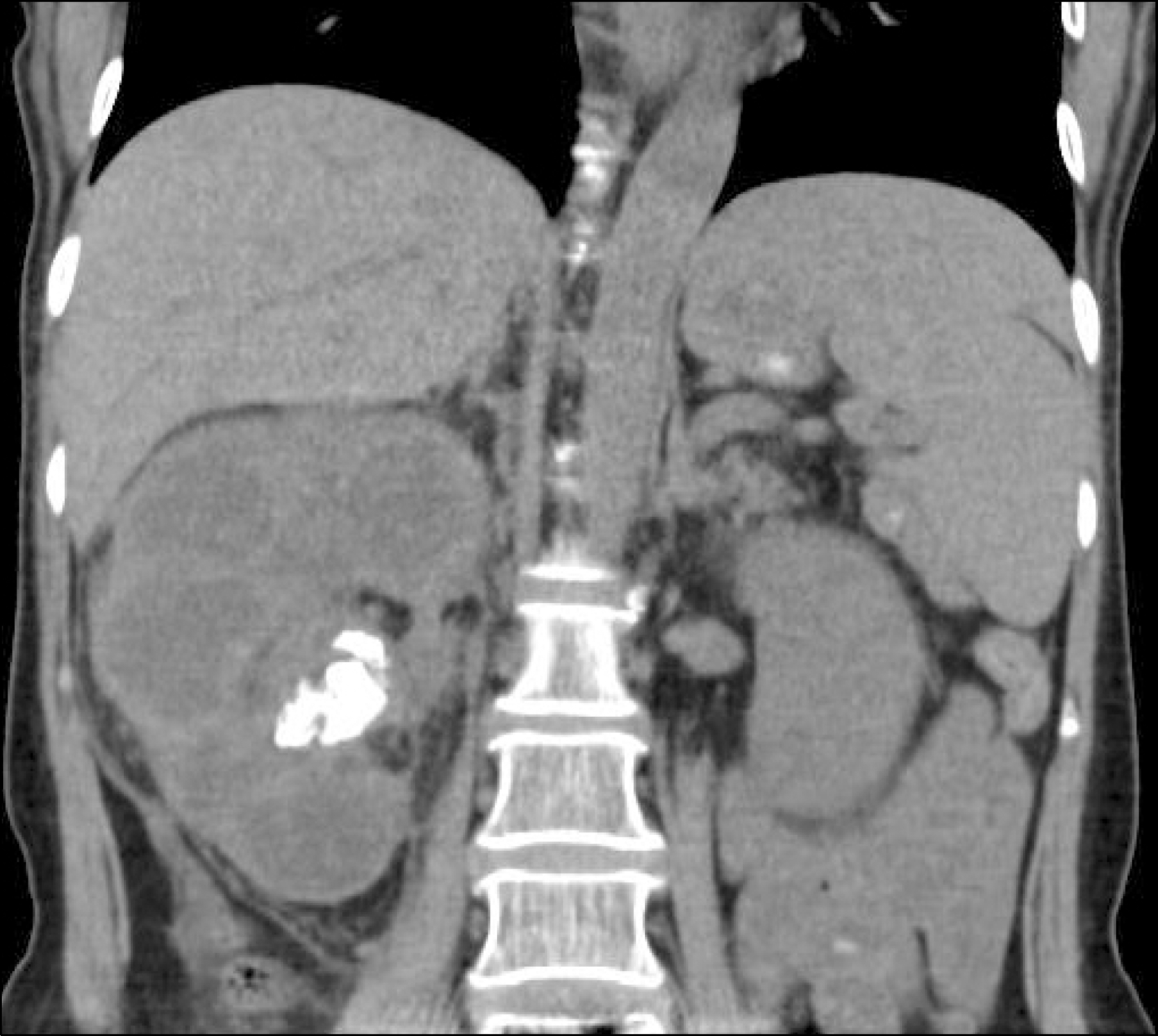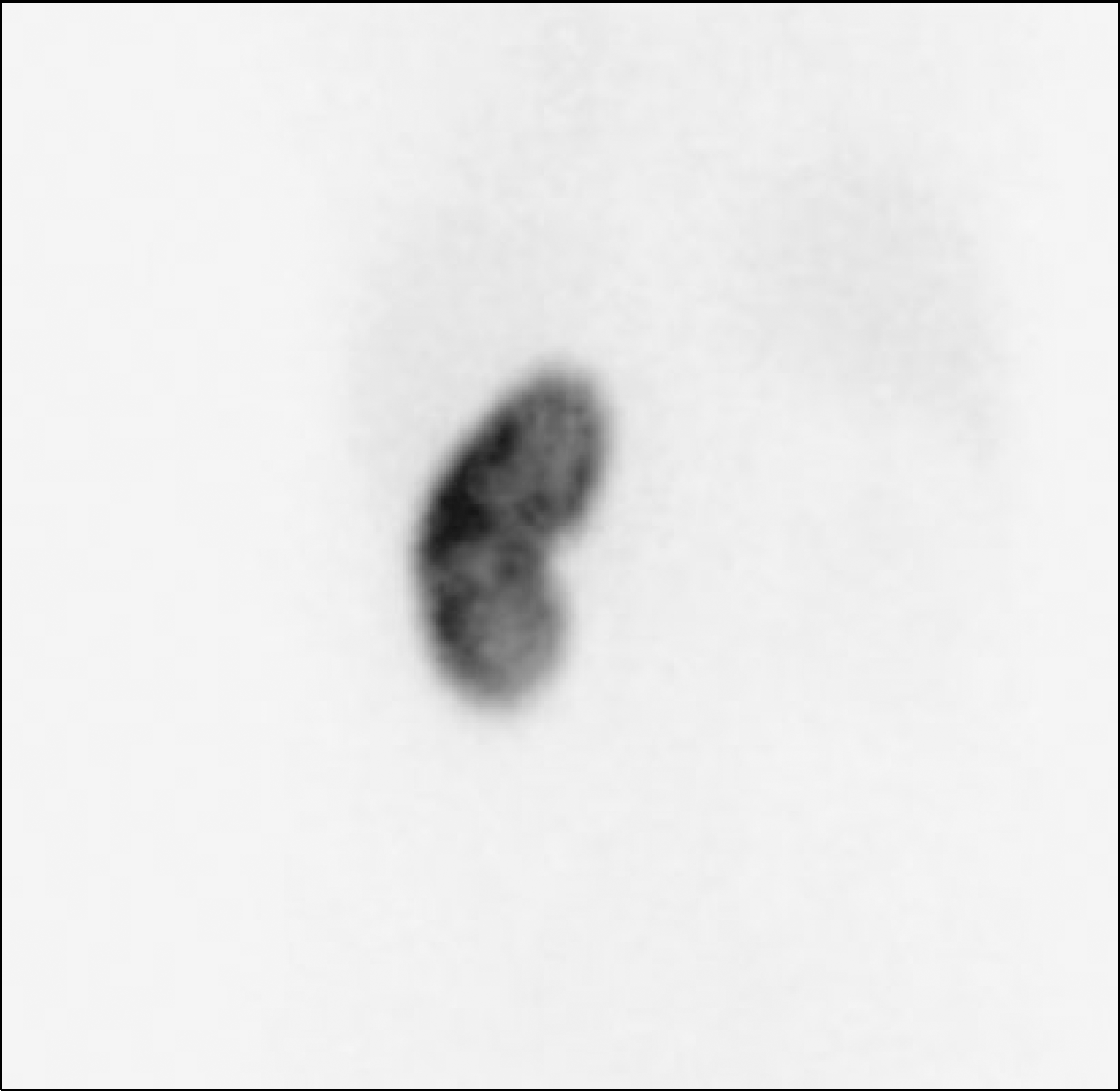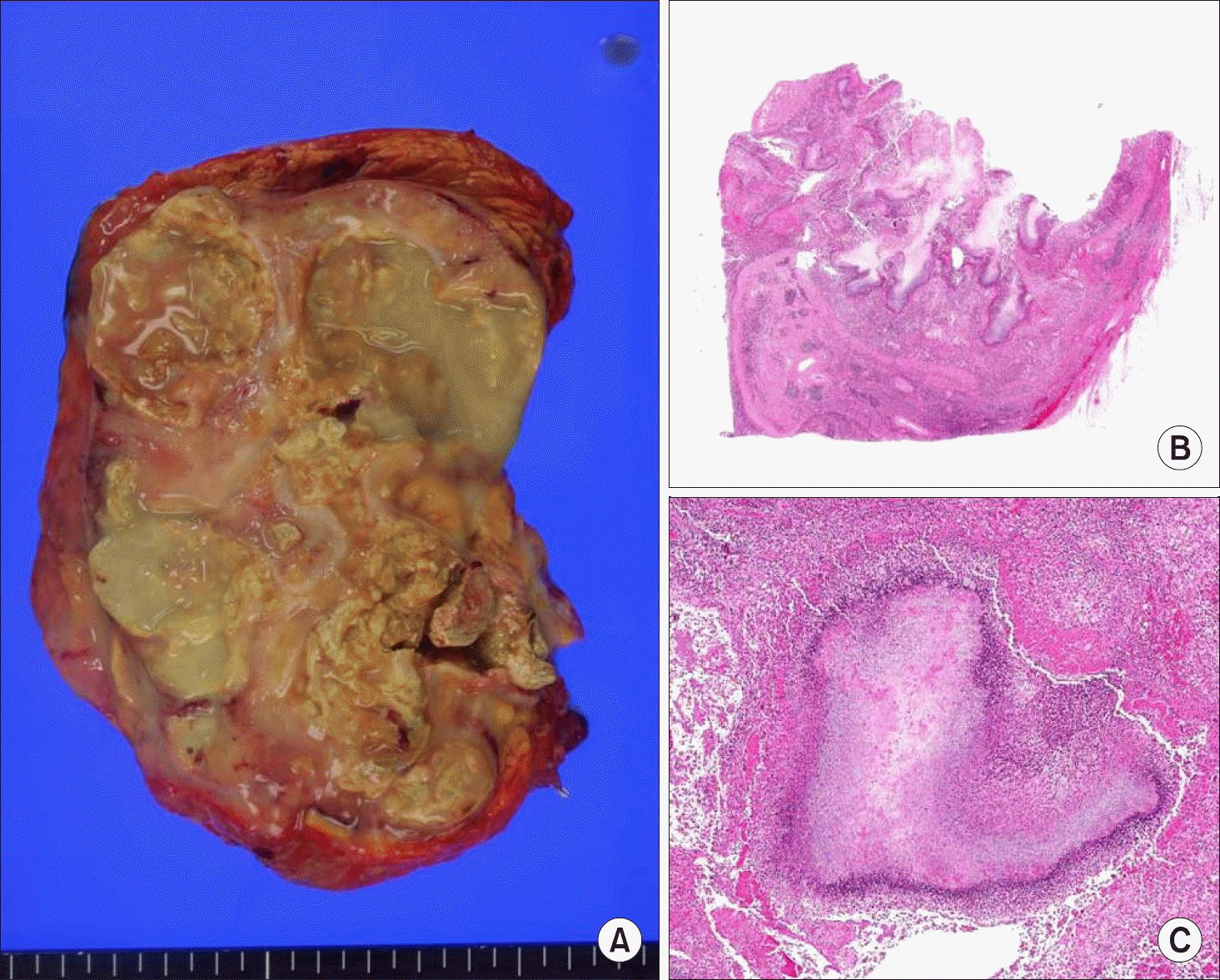Abstract
Actinomycosis is a chronic infectious disease that is generally caused by Actinomyces israelii. Renal actinomycosis is a very rare disease, especially accompanying staghorn calculi formation. In this article, we present a case of renal actinomycosis with the staghorn calculi formation. A 52-year-old woman presented with a 3-month history of pain in the right upper quadrant. The abdominopelvic computed tomography scan showed staghorn calculi and severe dilatation of the pelvicalyceal system of the right kidney. A right simple nephrectomy and a partial resection of the infrahepatic inferior vena cava were performed. We anticipated that the final diagnosis would be xanthogranulomatous pyelonephritis, however histopathologic tests revealed renal actinomycosis with abscess formation and extensive inflammation, glomerulosclerosis and staghorn calculi.
REFERENCES
1. Khalaff H, Srigley JR, Klotz LH. Recognition of renal actinomycosis: nephrectomy can be avoided. Report of a case. Can J Surg. 1995; 38:77–9.
2. Berchtenbreiter C, Bruning R, Auernhammer A, Reiser M. Misleading diagnosis of retroperitoneal actinomycosis. Eur Radiol. 1999; 9:1869–72.

3. Hawnaur JM, Reynolds K, McGettigan C. Magnetic resonance imaging of actinomycosis presenting as pelvic malignancy. Br J Radiol. 1999; 72:1006–11.

4. Lim KT, Moon SJ, Kwon JS, Son YW, Choi HY, Choi YY, et al. Urachal actinomycosis mimicking a urachal tumor. Korean J Urol. 2010; 51:438–40.

5. Sallami S, Nouira Y, Hmidi M, Mekni A, Hendaoui L, Horchani A. Pseudo-tumoral renal actinomycosis. Int J Urol. 2006; 13:803–4.

Fig. 1.
Non-contrast enhanced computed tomography of the kidney showing hydronephrosis and radiopaque lesion on pelvocalyceal system of the right kidney.

Fig. 2.
The 99mTc-dimercaptosuccinic acid scan showing the invisible right kidney that the relative function is 2% compared with 98% of the left kidney.

Fig. 3.
(A) Gross finding, (B, C) microscopic findings (H&E stain; B, ×2; C, ×50). Grossly, the kidney is enlarged, and perirenal fat tissue is fibrotic and firmly attached with renal cortical surface. (A) On section, the kidney is mainly replaced by yellowish grey or greenish necrotic and purulent tissue, forming pseudocystic changes. In area, stony hard consistency is noted and irregular fibrotic tissue is noted, peripherally. (B) Microscopically, the kidney is nearly replaced by conglomerated abscesses, associated with chronic active inflammation with fibrosis and fine calcification. Characteristic sulfur granules rimmed by neutrophils are well observed (C) and they show central degeneration.





 PDF
PDF ePub
ePub Citation
Citation Print
Print


 XML Download
XML Download